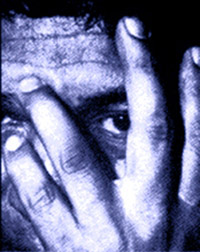Here’s the eighth installment of LiteratEye, a series found only on The Art of the Prank Blog, by W.J. Elvin III, editor and publisher of FIONA: Mysteries & Curiosities of Literary Fraud & Folly and the LitFraud blog.
LiteratEye #8: Categorizing Castaneda
By W.J. Elvin III
April 3, 2009
 This column was going to be a subjective list of the top twenty false memoirs of the modern era, but I got sidetracked thinking about that man of mystery and mischief, Carlos Castaneda.
This column was going to be a subjective list of the top twenty false memoirs of the modern era, but I got sidetracked thinking about that man of mystery and mischief, Carlos Castaneda.
Literary detectives tend to lump Castaneda in with fakers like James Frey, J.T. Leroy, Norma Khouri and various other fraudsters and hoaxers. Some have been “featured artists” in this column and others are backstage awaiting their cue.
The slippery standard they are judged by is “authenticity.” The way the critics see it is that if you say your book is true, well, then it shouldn’t be a big stinking heap of bullshit.
On the other hand, you have those appalled by “radical individualism,” their contention being that if there is cultural truth in the book then it’s not a con. Those waters get awfully deep and theoretical.
At a depth I can handle, the debate is about whether to judge Castaneda as a scholarly anthropologist obliged to operate within certain narrow professional standards.
An academic vigilance committee gave him a good working over in The Don Juan Papers, edited by Roger De Mille, published by the Wadsworth Modern Anthropology Library.
In addition to academic purists, Castaneda ticked off some indigenous peoples who include him as one of many scammers capitalizing on their heritage and spirituality. A statement attributed to a group of Native American elders lashes out at authors, Castaneda among them, who “grew rich peddling their trash, while real Indians starved to death”¦”
That comment points to a big hole in any argument supporting certain fakers. To write a fake story claiming to be a true account of suffering through the Holocaust, for instance, seems just plain immoral. It provides ammo to the deniers, for one thing. Ken Waltzer, who exposed the falsehoods in “An Angel at the Fence,” points out that false Holocaust memoirs “call into question memoirs of experience by other Holocaust survivors who confront their difficult pasts with integrity, despite the burdens.”
Well, does Castaneda really deserve to be lumped in with fake tales of abuse, oppression and misery? Seems to me he made it plain he was a budding brujo, so how can you apply conventional literary structures and strictures to his work? It’s in the shamanic job description to be a joker, a prankster, a master of tricks that propel us beyond “ordinary” reality.
Certain deep thinkers suggest what’s needed is a category between “non-fiction” and “fiction.” And the term “faction” has indeed been bandied about in literary-discussion circles, but it’s not very catchy. Norma Khouri, formerly an abused Jordanian woman pursued by bloodthirsty terrorists but since exposed as a liar extraordinaire, defends her work as “faction,” emanating from “the fuzzy territory between truth and fiction.”
I guess Castaneda fits into the “fuzzy territory” category. To me, back in the old days anyway, his books were mesmerizing travel guides to strange and mysterious places. Thinking about him takes me back to the time, wandering around down in the Sierra Madres hoping to stumble across Don Juan Matus, I saw Richard Nixon’s face in a waterfall.
I thought it was a natural marvel. Greatly enthused, I suggested to the Mexican Tourism Board that they establish a shrine there for fat-cat right-wing gringos to come and pay their respects. It would provide a sure-fire economic boost to the desperate local economy. Oddly enough, the tourist bureau greeted my bright idea with a powerful silence.
That’s true. But if Castaneda had been required to paste a big bold Fiction label on his inspiring work, I might have missed out on some great personal adventures. I’d like to share a few more with you but I’m saving them for my memoirs.
(Copyright 2009 WJE, exclusive to The Art of the Prank, for reprint rights contact Literateye@gmail.com)
photo: Ecclesia Gnostica in Nova Albion: The Dark Legacy of Carlos Castaneda
Related posts:
